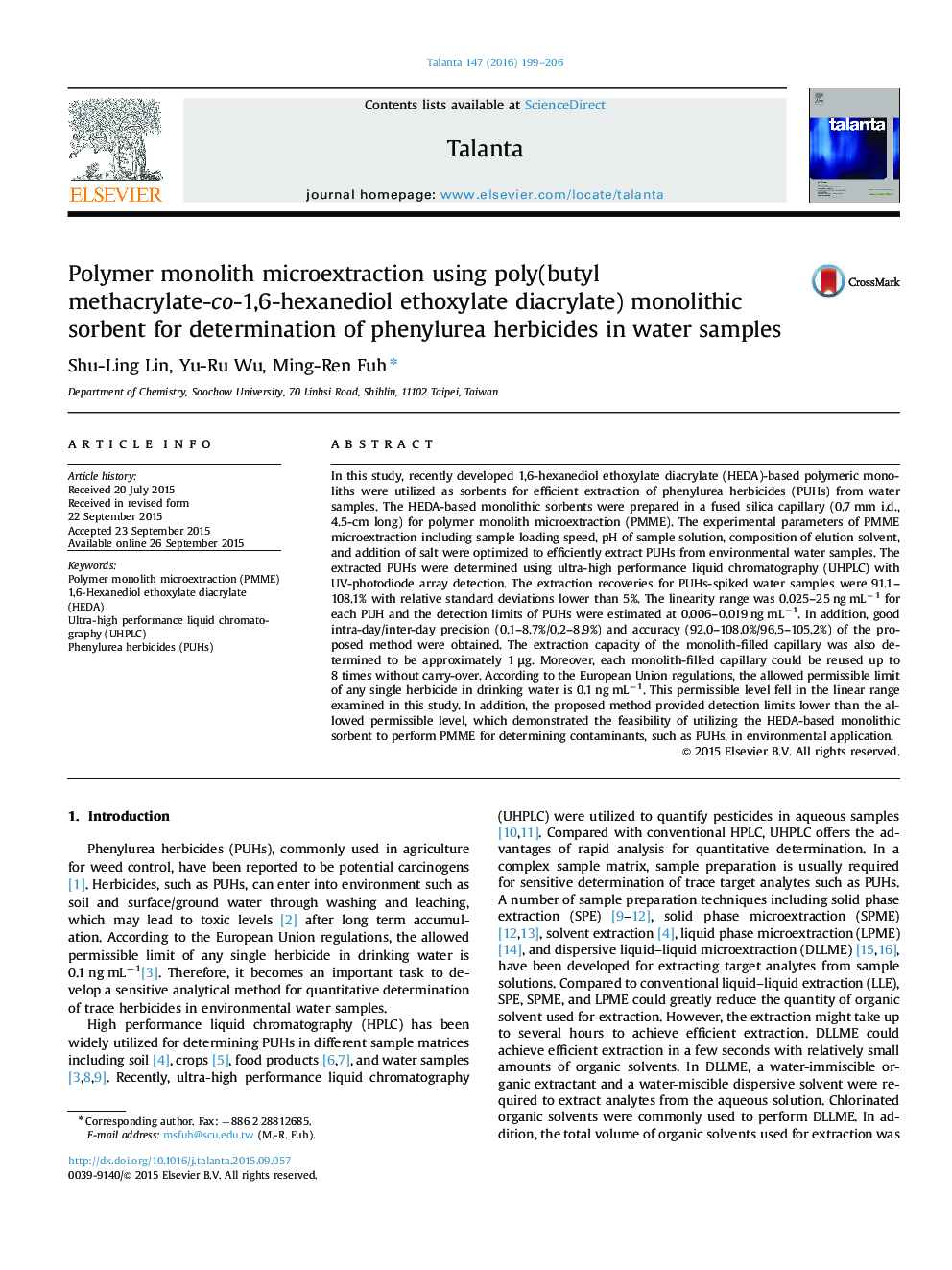| کد مقاله | کد نشریه | سال انتشار | مقاله انگلیسی | نسخه تمام متن |
|---|---|---|---|---|
| 1242744 | 1495788 | 2016 | 8 صفحه PDF | دانلود رایگان |

• First reported HEDA-based sorbent to extract PUHs from environmental waters by PMME.
• HEDA-based monolithic sorbent was reusable and easy to operate for PMME.
• HEDA-based PMME-UHPLC-UV offered good sensitivity, linearity, precision and accuracy.
In this study, recently developed 1,6-hexanediol ethoxylate diacrylate (HEDA)-based polymeric monoliths were utilized as sorbents for efficient extraction of phenylurea herbicides (PUHs) from water samples. The HEDA-based monolithic sorbents were prepared in a fused silica capillary (0.7 mm i.d., 4.5-cm long) for polymer monolith microextraction (PMME). The experimental parameters of PMME microextraction including sample loading speed, pH of sample solution, composition of elution solvent, and addition of salt were optimized to efficiently extract PUHs from environmental water samples. The extracted PUHs were determined using ultra-high performance liquid chromatography (UHPLC) with UV-photodiode array detection. The extraction recoveries for PUHs-spiked water samples were 91.1–108.1% with relative standard deviations lower than 5%. The linearity range was 0.025–25 ng mL−1 for each PUH and the detection limits of PUHs were estimated at 0.006–0.019 ng mL−1. In addition, good intra-day/inter-day precision (0.1–8.7%/0.2–8.9%) and accuracy (92.0–108.0%/96.5–105.2%) of the proposed method were obtained. The extraction capacity of the monolith-filled capillary was also determined to be approximately 1 μg. Moreover, each monolith-filled capillary could be reused up to 8 times without carry-over. According to the European Union regulations, the allowed permissible limit of any single herbicide in drinking water is 0.1 ng mL−1. This permissible level fell in the linear range examined in this study. In addition, the proposed method provided detection limits lower than the allowed permissible level, which demonstrated the feasibility of utilizing the HEDA-based monolithic sorbent to perform PMME for determining contaminants, such as PUHs, in environmental application.
Figure optionsDownload as PowerPoint slide
Journal: Talanta - Volume 147, 15 January 2016, Pages 199–206